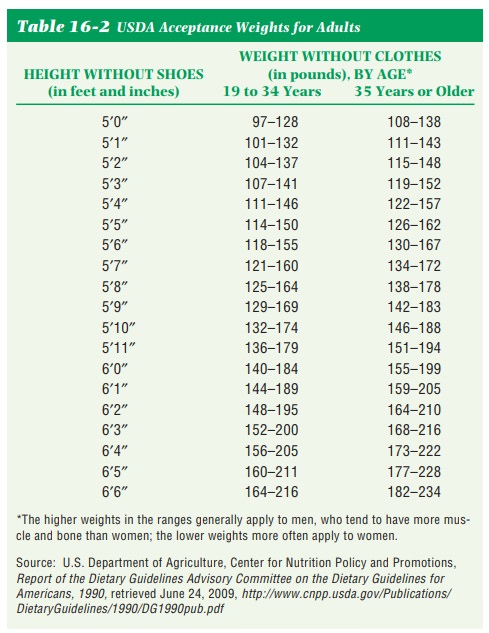Chapter: Nutrition and Diet Therapy: Diet and Weight Control
Overweight and Obesity
OVERWEIGHT AND OBESITY
Obesity and overweight
have become epidemic. Sixty-four percent of Ameri-cans are overweight or obese.
Data from the National Center for Health Statistics show that 73% of adults 20
years old and older are overweight or
The percentage
of overweight children and teens has tripled in the last 25 years and currently
is 40.8%. Overweight puts extra strain on the heart, lungs, muscles, bones, and
joints, and it increases the susceptibility to diabetes
mellitus and hypertension. It increases surgical risks, shortens thelife
span, causes psychosocial problems, and is associated with heart disease and
some forms of cancer.
Causes
There is no one cause
for excess weight, but poor diet and inactivity appear to be leading factors.
Genetic, physiological, metabolic, biochemical, and psycho-logical factors can
also contribute to it. Energy imbalance is a significant cause of overweight.
People eat more than they need. Excess weight can accumulate during and after
middle age because people reduce their level of activity andmetabolism slows
with age. Consequently, weight accumulates unless calorie intake is reduced. Hypothyroidism is a possible, but
rare, cause of obesity. In this condition, the basal metabolic rate (BMR) is
low, thereby reducing the number of calories needed for energy. Unless
corrected with medication, this condition can result in excess weight.
There are two popular
theories about weight loss: the fat cell theory and the set-point theory.
According to the fat cell theory, obesity develops when
the size of fat cells increases. When their size decreases, as during a
reducing diet, the individual is driven to eat in order for the fat cells to
regain their former size. Therefore, it is difficult to lose weight and keep it
off.
According to the set-point theory, everyone has a set
point or natural weight at which the body is so comfortable that it does not
allow for deviation. This is said to be the reason why some people cannot lose
weight below a “set point” or why, if they do, they quickly regain to that “set
point.” The only way to lower a set point is through exercising three to five
times a week.
Healthy Weight
Not everyone fits the
USDA weight table shown in Table 16-2 or the “healthy weight target,” which is
a BMI of 18.5 to 25. For anyone with a BMI of 25 or higher, a more realistic
approach would be a reduction of one or two BMI points to reduce health
problems and disease risks. After this loss has been maintained for 6 months,
further lowering of the BMI needs to be attempted. A “healthy weight” may be
the weight at which one is eating nutritiously, is exercising, has no health
problems, and is free from disease.

Related Topics